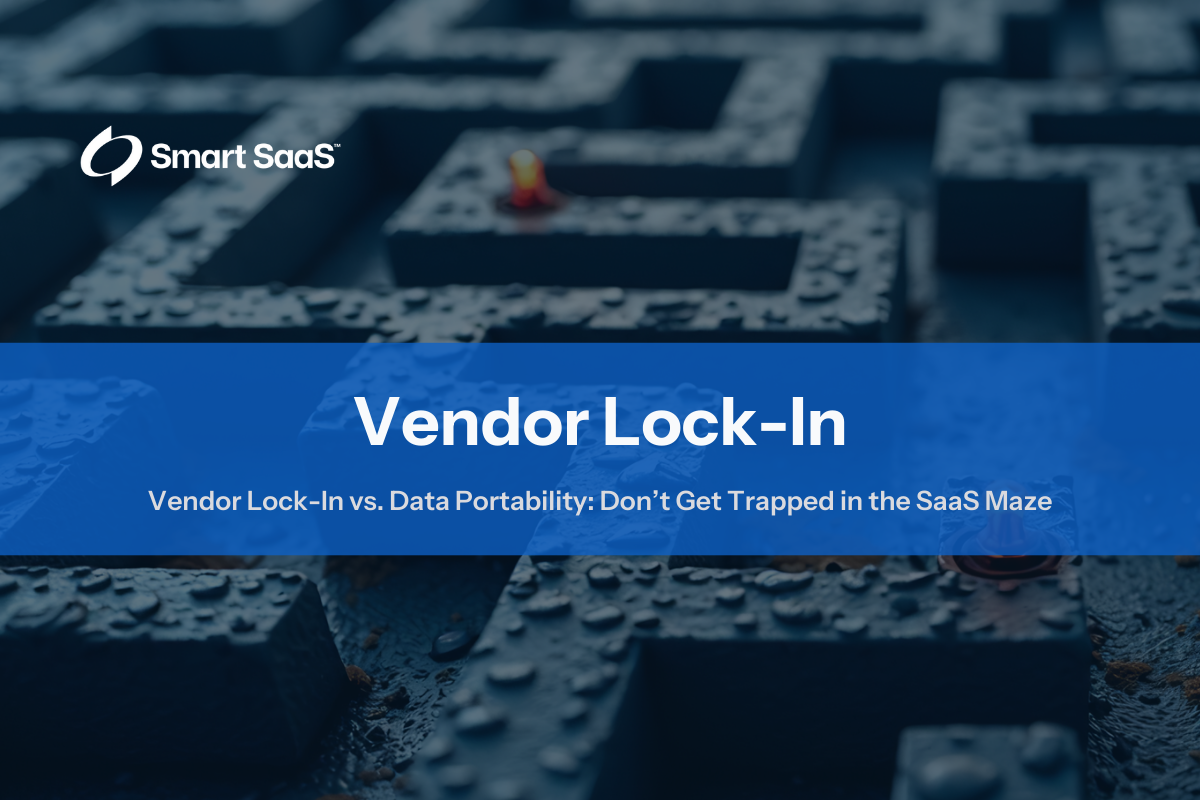

Wednesday, April 16, 2025
Kevin Anderson
In today’s SaaS‑saturated market, switching platforms should be as seamless as signing up. But the reality is far from it. Many businesses find themselves trapped in rigid ecosystems, blocked by technical, contractual, or financial barriers—unable to move their data without pain or penalty. This is vendor lock‑in—and unless you plan for it upfront, it can stall innovation, inflate costs, and erode control over your most critical asset: data.
Let’s explore how to avoid the trap, assess true data portability, and build an exit strategy before you ever need one—using frameworks from Data Privacy in the SaaS Era.

Vendor lock‑in occurs when a customer becomes so dependent on a particular SaaS provider that switching becomes extremely difficult or disruptive. While lock‑in is sometimes painted as the “price of convenience,” its hidden costs will surface—often at the worst possible moment, such as during a compliance audit, merger, or global expansion.
It happens through:
What starts as convenience quickly becomes constraint. SaaS buyers who fail to identify lock‑in mechanisms during procurement often discover them later—when leverage has shifted to the vendor.
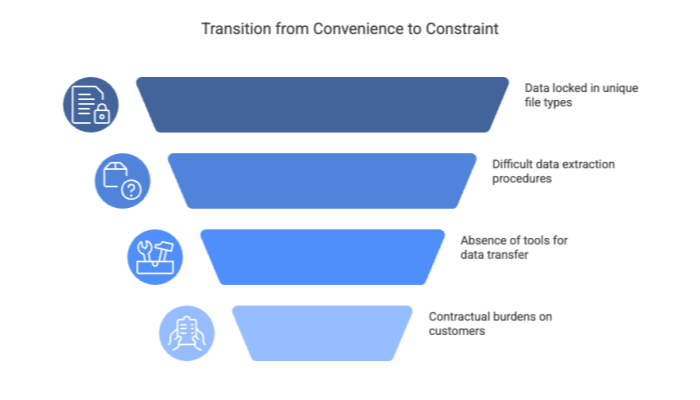

Lock‑in is often mischaracterized as just a technical hurdle. In reality, it is a multidimensional risk that permeates every department:
Gartner’s 2025 SaaS Buyer Survey revealed that organizations stuck in high lock‑in contracts spent 27 % more on overlapping licenses than peers with exit‑friendly architectures. That delta represents budget that could have fueled innovation or AI projects.
Lock‑in also erodes your ESG narrative. Stakeholders expect ethical data stewardship, yet opaque exit terms conflict with transparency goals—diminishing brand trust.
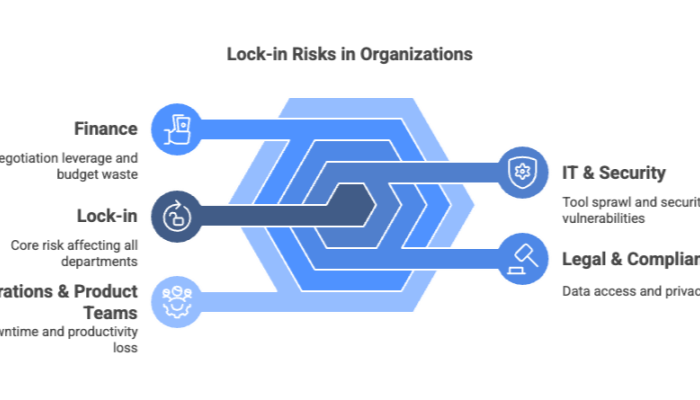

Data portability is your ability to export, transfer, or migrate your data from one SaaS provider to another in a usable, complete format—without losing fidelity, structure, or access.
A privacy‑first SaaS partner will:
Industry Best Practice: Leaders in SaaS platform architecture automatically generate data schemata and change logs to simplify downstream ingestion—whether you migrate or integrate.
Portability is also enshrined in policy. GDPR Article 20 grants EU citizens data‑portability rights, and similar clauses appear in Brazil’s LGPD and California’s CPRA. A vendor ignoring portability undermines your compliance roadmap.
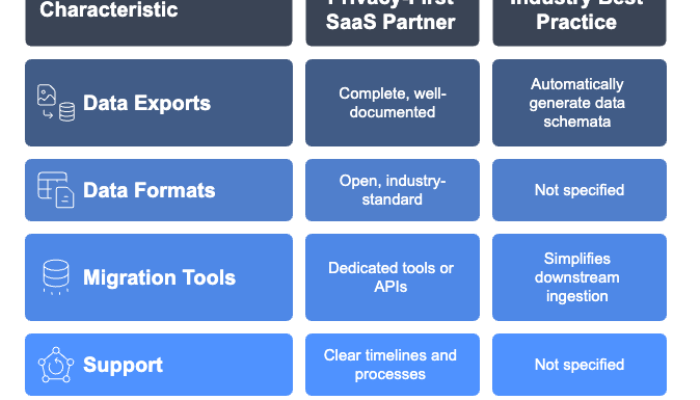

Lock‑in horror stories abound, but two scenarios stand out:
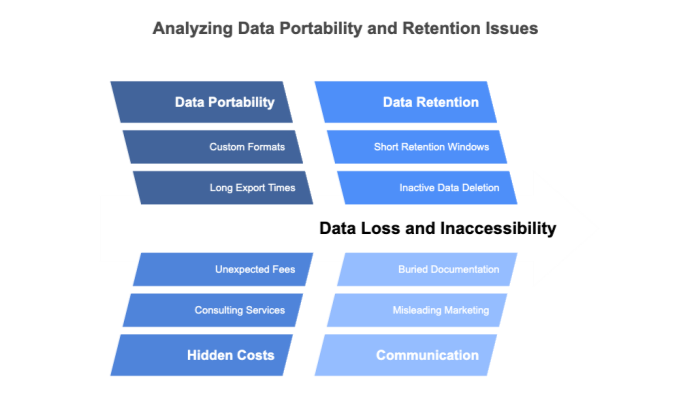

These due‑diligence questions transform sales demos into strategic vetting sessions:
If any answer is vague or restricted, treat it as a red flag—just as you would scrutinize opaque usage‑based pricing.


Legal language is often where lock‑in is codified—quietly, but effectively. Watch out for stealth clauses that limit portability:
Your Master Service Agreement (MSA) and DPA should spell out:
Pair contractual reviews with a cost analysis like those in SaaS pricing model guides to weigh lock‑in costs against benefits.


Companies with high data portability enjoy:
According to modern SaaS business‑model thinking, switching costs should be low by design. If your vendor fights portability, they’re signaling a business model at odds with customer success.
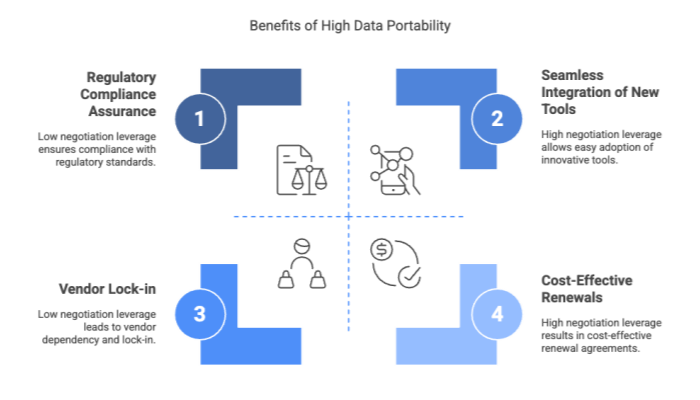

While portability is about taking your data with you, interoperability is about connecting it with other systems while still in use. SaaS platforms that support both offer exponentially greater flexibility:
Even if you’re not planning to switch, interoperability prevents data silos—reducing the “SaaS sprawl” risks highlighted in cost of SaaS sprawl.


Guarding against lock‑in isn’t reactive—it’s systemic. Follow this roadmap:
For highly regulated sectors, combine these steps with SaaS security challenge checklists to create a holistic governance program.
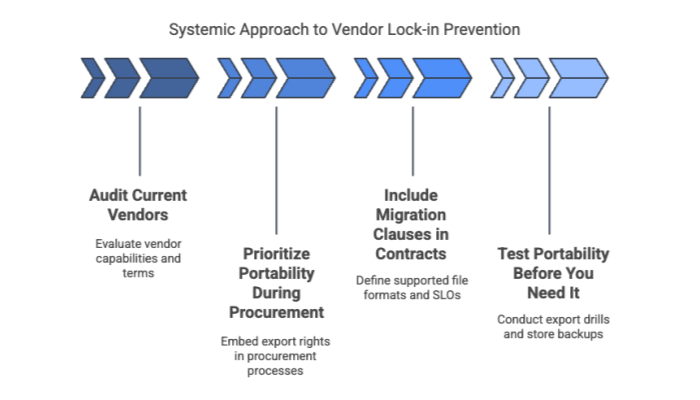

Lock‑in doesn’t just hurt your tech team—it ripples across brand reputation and customer loyalty. Flip the script:
If your provider bristles at the idea of portability, ask yourself why. Trustworthy partners see customer mobility as a sign of confidence in their ongoing value, not a threat.
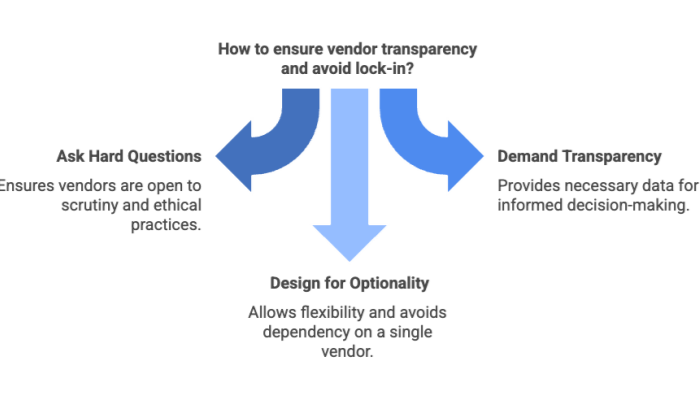

SaaS was meant to liberate businesses—not limit them. But without the ability to move freely, what you gain in scalability, you risk losing in control. Whether you're evaluating a new tool or managing an existing one, now is the time to make data portability a cornerstone of your SaaS strategy.
Download the full eBook: Data Privacy in the SaaS Era and discover how to identify vendor traps, negotiate smarter, and keep your business in control of its most valuable asset—your data.
